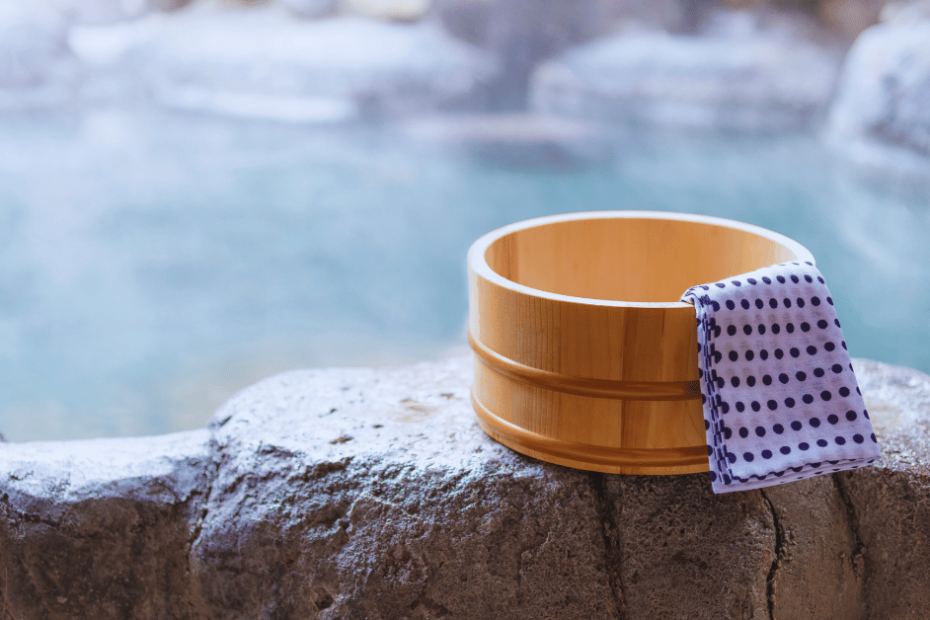Imagine soaking in warm, mineral-rich waters while surrounded by New Mexico’s stunning landscapes. Natural hot springs offer a unique way to unwind and connect with nature. Whether you’re a seasoned traveler or a curious explorer, these geothermal wonders promise relaxation and rejuvenation.
New Mexico’s hot springs aren’t just about relaxation; they also carry a rich history and cultural significance. From ancient Native American traditions to modern wellness retreats, these springs have been cherished for centuries. Ready to discover the best spots to soak your stress away? Let’s jump into the enchanting world of New Mexico’s natural hot springs.
Key Takeaways
- Variety and Diversity: New Mexico offers a wide range of natural hot springs with varying levels of accessibility, amenities, and scenic beauty. From easily accessible spots like Montezuma Hot Springs to more remote, adventurous locations like Turkey Creek Hot Springs, there’s something for every preference.
- Historical and Cultural Significance: These hot springs are not only recreational but also carry historical and cultural weight. Places like Ojo Caliente Hot Springs have been cherished for centuries, offering therapeutic benefits and a peek into ancient traditions.
- Top Attractions and Hidden Gems: Popular spots like Truth or Consequences Hot Springs and Riverbend Hot Springs offer extensive amenities and well-maintained facilities. Meanwhile, hidden gems like La Paloma Hot Springs & Spa and Lightfeather Hot Springs provide more intimate, off-the-beaten-path experiences.
- Seasonal and Environmental Considerations: The best times to visit are during spring and fall for mild weather. Always practice sustainability by packing out trash, using eco-friendly products, and respecting local wildlife to preserve the natural beauty of these locations.
- Safety and Preparation: Proper preparation is key, especially for remote springs that require hiking. Ensure you are physically ready, hydrated, and equipped with the right gear. Be aware of weather conditions and trail difficulty to ensure a safe and enjoyable visit.
- Accessibility and Accommodations: While some springs are remote and require hiking, others are close to accommodations offering various amenities. Choices range from historic lodges like Sierra Grande Lodge to budget-friendly options like Pelican Spa.
Southern New Mexico Hot Springs
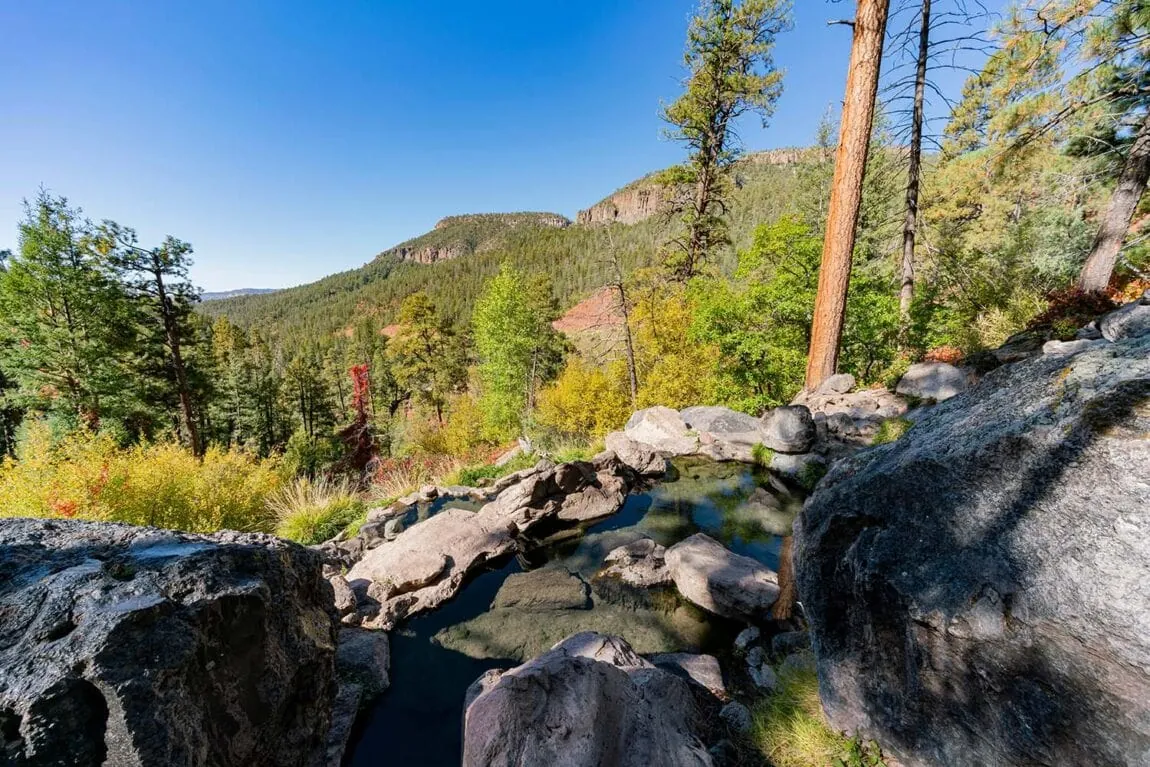
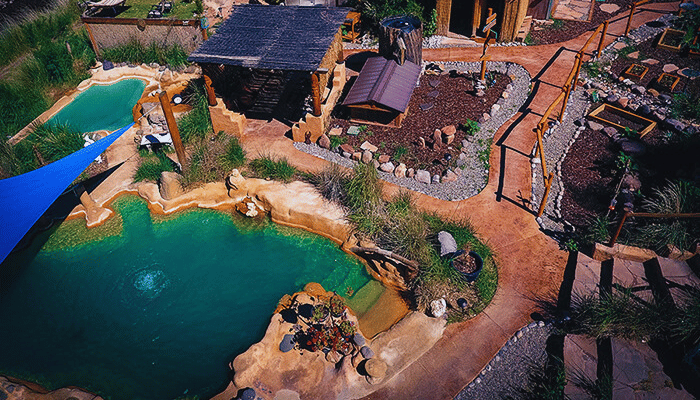
When exploring the natural hot springs in southern New Mexico, you’ll find hidden gems and top attractions that offer both relaxation and adventure. The region’s diverse geothermal features provide a unique escape surrounded by stunning landscapes.
1. Truth or Consequences Hot Springs
Truth or Consequences, known for its abundance of geothermal wonders, is a must-visit destination for hot spring enthusiasts. The town’s rich history and therapeutic waters attract many visitors.
Top Attractions:
- Riverbend Hot Springs: Nestled along the Rio Grande, this facility offers public and private pools with temperatures ranging from 100°F to 108°F. Enjoy landscaped gardens, a sauna, massages, and wellness classes. A public soak costs $12 per hour, whereas a private soak costs $45 per hour for two people.
- Sierra Grande Lodge & Spa: Offering private soaking tubs, this historic venue combines luxury with therapeutic benefits. Enjoy a tranquil, indoor setting.
- Pelican Spa: Known for its colorful, artistic decor, Pelican Spa offers private indoor and outdoor soaking tubs to ensure a serene experience.
Hidden Gems:
- La Paloma Hot Springs & Spa: Less crowded and more intimate, offering pristine, mineral-rich waters that are perfect for unwinding with a good book or meditating.
- Indian Springs: Traditional and rustic, offering an authentic hot spring experience in naturally occurring rock pools.
2. Gila Wilderness Area Hot Springs
Diving deeper into the wilderness, the Gila Wilderness Area provides a remote and adventurous experience for hot spring aficionados.
Top Attractions:
- Jordan Hot Springs: Accessible via a scenic 6-mile hike, Jordan Hot Springs offers a refreshing soak surrounded by wilderness. Temperatures average around 94°F, making it wonderfully relaxing.
- Lightfeather Hot Springs: Located near the headwaters of the Gila River, these springs are perfect for a day trip. The hike is relatively easy, and the soak offers a quiet retreat.
Hidden Gems:
- Turkey Creek Hot Springs: Requiring a bit more effort to reach, these secluded springs are worth the journey. A challenging 7-mile hike ensures privacy and the reward of perfectly warm waters set in rugged beauty.
Accommodations Comparison
| Accommodation | Type | Cost (approx.) | Amenities | Distance to Springs |
|---|---|---|---|---|
| Riverbend Hot Springs | Spa/Resort | $100-$200 | Pools, Sauna, Spa services | On-site |
| Sierra Grande Lodge & Spa | Historic Lodge | $150-$250 | Private Tubs, Spa services | On-site |
| Pelican Spa | Budget Inn/Spa | $70-$120 | Private Tubs, Eclectic Decor | On-site |
| La Paloma Hot Springs | Boutique Hotel | $80-$140 | Private Baths, Peaceful Atmosphere | On-site |
- Transportation: Renting a car is highly recommended to visit these remote areas.
- Seasonal Variations: Summer can be very hot; spring and fall offer milder conditions ideal for soaking.
- Budget Considerations: Public soaks are more economical, while private soaks offer more comfort.
- Sustainability Tips: Preserve water quality by avoiding the use of soaps and shampoos in the springs. Pack out all trash, including biodegradable materials.
Jump into the therapeutic, mineral-rich waters of southern New Mexico’s hot springs, and experience the unique blend of adventure and tranquility that these geothermal treasures offer. Whether you’re a seasoned traveler or a casual visitor, the rich history and scenic beauty of these springs will leave you rejuvenated.
Northern New Mexico Hot Springs
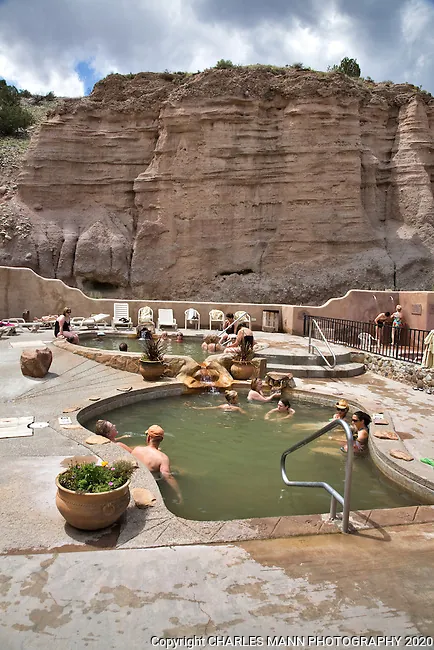
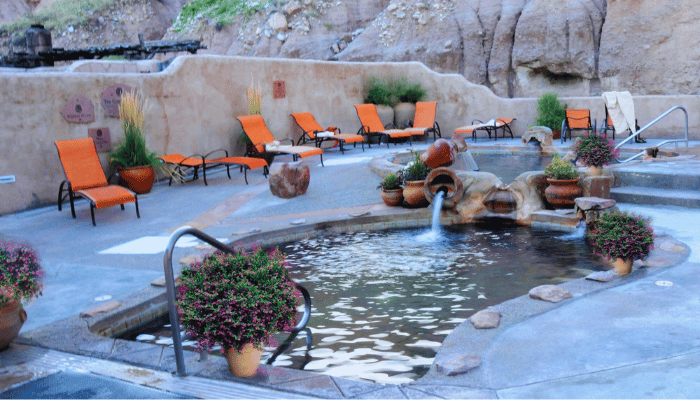
Discover the mesmerizing allure of Northern New Mexico’s hot springs, where mineral-rich waters promise relaxation amidst stunning landscapes. From historic health spas to secluded natural pools, this region offers a diverse range of geothermal experiences.
1. Ojo Caliente Hot Springs
Nestled between Santa Fe and Taos, Ojo Caliente Hot Springs is one of the oldest natural health spas in the U.S., established in 1868. Located in the foothills of the Carson National Forest, this historic site boasts nine communal hot springs and private soaking tubs.
Each pool features unique geothermal mineral waters—iron, arsenic, soda, and lithia—that offer therapeutic benefits like improved skin health and relief from arthritis. You can indulge in a serene soak while soaking in the stunning natural surroundings.
2. Black Rock Hot Springs
Located just outside the town of Taos, Black Rock Hot Springs provides a tranquil, secluded escape along the Rio Grande. These springs feature two mud-bottomed rock pools with an average temperature of 97°F, which varies slightly depending on the river level.
Getting there involves a scenic short walk off a dirt road, making the experience feel like a well-earned retreat into nature.
3. Upper Rio Grande Hot Springs
The Upper Rio Grande area offers several enchanting hot springs worth exploring. These lesser-known spots provide a more intimate connection with nature. Consider visiting:
- Manby Hot Springs: Also known as Stagecoach Hot Springs, these pools lie near the confluence of the Rio Grande and are accessible via a brief hike. The springs range in temperature and are surrounded by dramatic canyon walls.
- John Dunn Bridge Hot Springs: Found near a historic bridge, these pools vary in size and temperature and provide stunning views of the river gorge.
4. Jemez Mountains Hot Springs
The Jemez Mountains are home to several iconic hot springs set against a backdrop of lush forests and rocky terrain. Highlights include:
- Spence Hot Springs: Located near Jemez Springs village, these easily accessible springs offer warm waters and a meaningful respite for outdoor enthusiasts.
- San Antonio Hot Springs: These remote springs require a drive and a hike but reward you with multiple deep, terraced pools with spectacular views of the valley.
Accommodations
| Accommodation | Location | Price (per night) | Amenities |
|---|---|---|---|
| Ojo Caliente Resort | Ojo Caliente | $150-$300 | Private soaking tubs, spa treatments, on-site dining |
| El Monte Sagrado | Taos | $200-$400 | Eco-friendly rooms, full-service spa, garden walks |
| Jemez Springs Bath House | Jemez Springs | $95-$200 | Historic charm, community hot springs, budget-friendly |
Dining Highlights
- Antonio’s The Taste of Mexico (Taos): Authentic Mexican cuisine with fresh, local ingredients.
- Farmhouse Cafe (Jemez Springs): Farm-to-table dining offering delicious and sustainable meals.
- Car Rentals: Available in Santa Fe and Taos; recommended for remote springs.
- Seasonal Variations: Spring and fall provide mild weather, while winter offers a snowy backdrop.
- Sustainability Tips: Carry reusable water bottles, respect wildlife, and follow Leave No Trace principles.
Immerse yourself in the mineral-rich waters of Northern New Mexico’s hot springs for a rejuvenating blend of adventure and tranquility.
What to Expect at Natural Hot Springs
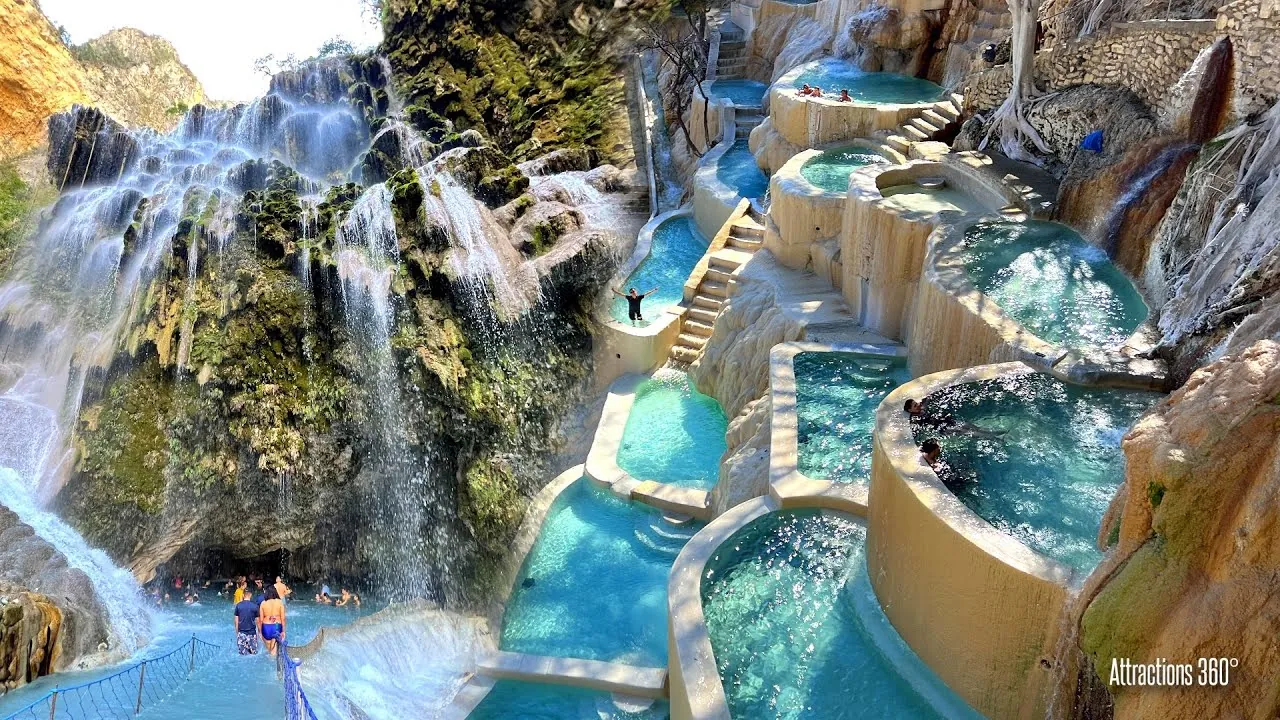
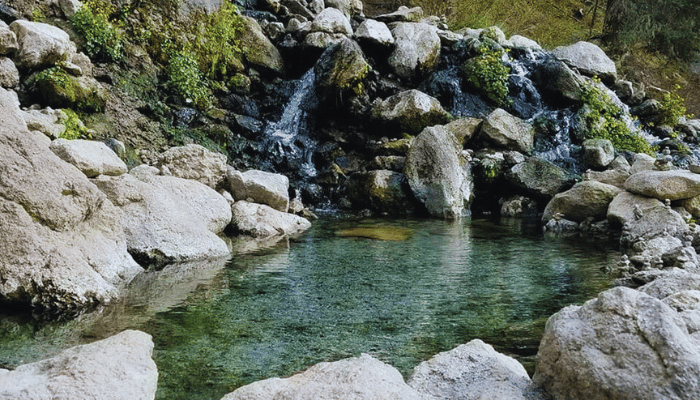
Visiting the natural hot springs in New Mexico promises not just relaxation but also an immersion in the raw beauty of diverse landscapes. Here’s a closer look at what you can expect during your trip.
World and Scenery
New Mexico’s hot springs are set amidst stunning backdrops, each offering a unique visual feast:
- San Antonio Hot Springs: Nestled in the Jemez Mountains, these springs are surrounded by a lush forest. Expect breathtaking views of the surrounding mountains.
- Black Rock Hot Springs: Located along the Rio Grande, these springs offer a serene and secluded experience. Enjoy the stunning desert world and river views.
- Montezuma Hot Springs: Near Las Vegas, New Mexico, these springs are set against the scenic United World College – USA buildings with a lush natural terrain.
- Lightfeather Hot Springs: Found in the remote Gila National Forest, these springs are alongside the Middlefork of the Gila River, providing a picturesque, tranquil setting.
Accessibility and Hiking Requirements
Each spring has different levels of accessibility, from easy strolls to more challenging hikes:
- San Antonio Hot Springs: Accessible via a rough, sometimes muddy 5-mile road that can be hiked or driven with a high-clearance vehicle when the road is open.
- Black Rock Hot Springs: A short, moderately steep hike of about 10 minutes from the parking area to the springs; the pathway can be rocky but is manageable.
- Montezuma Hot Springs: Easily accessible with minimal walking required; close to paved roads and parking.
- Lightfeather Hot Springs: Requires a hike of about 2 miles along the Middlefork of the Gila River, with some river crossings; best for those comfortable with moderate outdoor trekking.
Facilities and Amenities
Amenities vary across the hot springs, offering different levels of comfort and convenience:
- San Antonio Hot Springs: No on-site amenities; you’ll need to bring your own food, water, and supplies. Composting toilet available at the trailhead.
- Black Rock Hot Springs: Basic with no facilities; pack in what you need and pack out all trash. The experience is raw and natural.
- Montezuma Hot Springs: Better equipped, close to town amenities in Las Vegas. Several soaking pools with different temperatures. Local eateries and stores are a short drive away.
- Lightfeather Hot Springs: Primitive with no facilities. Ensure you bring sufficient supplies for a self-sustained outing. The remote location emphasizes a true back-to-nature experience.
These essential insights should help you plan a memorable visit to the natural hot springs of New Mexico. Whether you seek adventure or tranquility, there’s a hot spring here that’s perfect for your next getaway.
Safety Tips for Visiting Natural Hot Springs
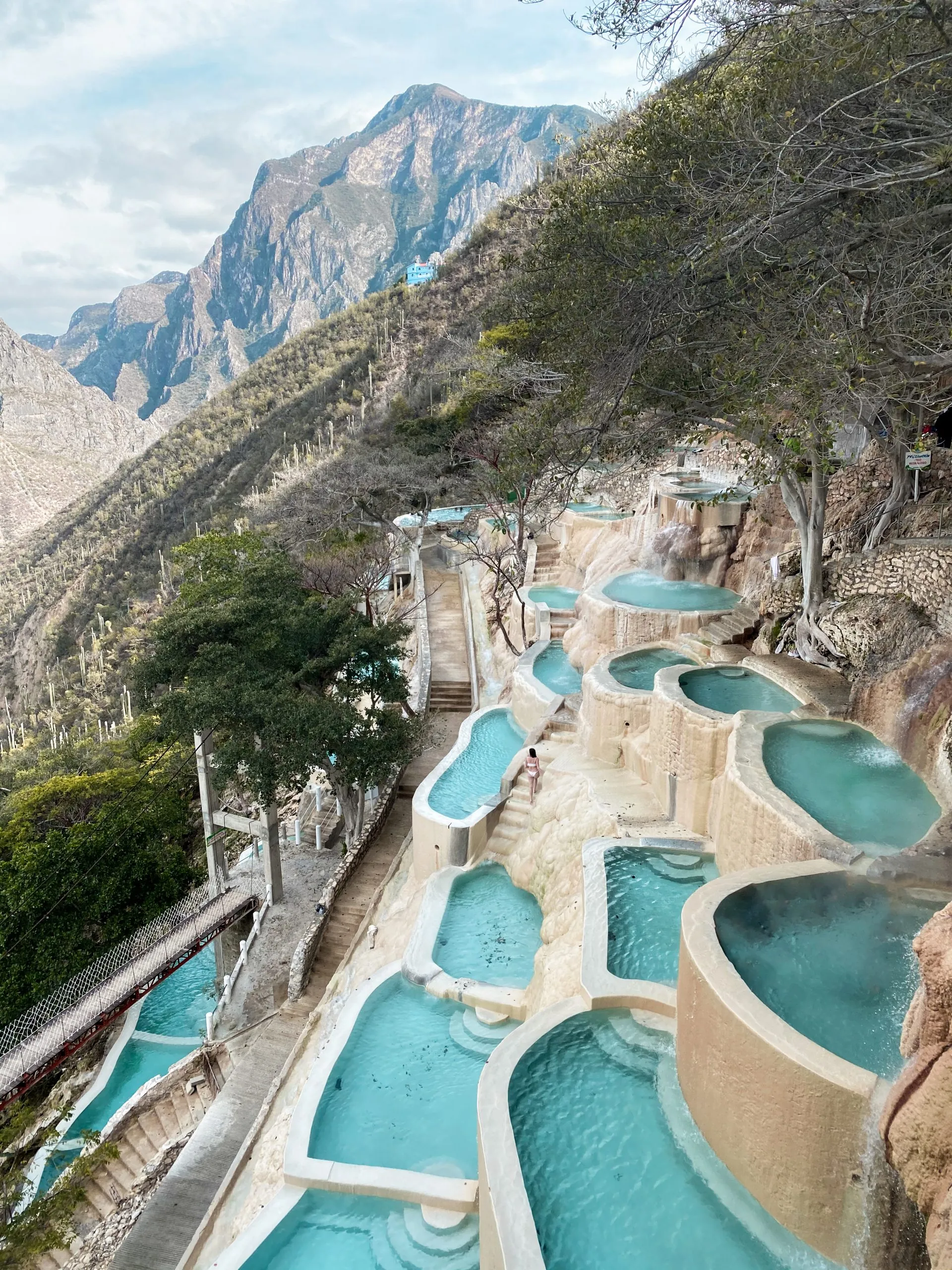
Environmental Respect
Always practice good hot-spring etiquette by leaving no trace and respecting the natural environment. This includes not littering and preserving the area’s natural beauty. Use eco-friendly products and avoid disturbing wildlife. Remember, your actions can impact these delicate ecosystems. By following these guidelines, you’ll help protect these precious natural resources for future generations.
Physical Preparation
Be prepared for the physical demands of reaching some hot springs. Many springs, like San Antonio Hot Springs, require a hike that can range from 1 to 6 miles depending on the season. Ensure you’re in good physical condition and come equipped with appropriate gear, such as hiking boots, sufficient water, and weather-appropriate clothing. Carry a first-aid kit and inform someone of your travel plans.
Hydration and Weather Awareness
Stay hydrated by drinking plenty of water before and after your soak. The dry climate and the heat of the springs can dehydrate you quickly. Check the weather forecast and avoid visiting if extreme weather conditions, such as heavy rain or snowstorms, are predicted. Always be mindful of sudden weather changes and be prepared to adjust your plans accordingly.
Time Management
Plan your visit during daylight hours to avoid exploring treacherous trails in the dark. Allocate extra time for unforeseen circumstances, like longer hikes or the need for rest breaks. Being mindful of your time ensures a safer and more enjoyable experience.
River Levels and Trail Conditions
Assess river levels and trail conditions, especially at locations like Black Rock Hot Springs, which can be affected by water levels. Avoid crossing swollen rivers and be cautious on muddy or slippery trails. Safe trail planning can prevent accidents and injuries.
Avoiding Overcrowding
Choose less crowded times to visit these natural hot springs. Visiting during off-peak hours or seasons can enhance your experience by offering a more peaceful and private soak. This also helps minimize human impact on the environment.
Wildlife Safety
Be aware of the local wildlife and know how to act if you encounter animals. Avoid feeding them, maintain a safe distance, and store food securely. Understanding and respecting wildlife enhances both your safety and the preservation of their habitat.
Emergency Preparedness
Carry a map, compass, or GPS device, as some areas may have limited cellphone reception. Know the nearest exit routes and emergency contacts. Being prepared for emergencies is crucial, especially in remote areas.
Health Considerations
Check with your healthcare provider before soaking if you have any medical conditions, such as blood pressure issues or skin sensitivities. Pregnant women should consult their doctors before hot spring visits. Pay attention to how your body feels and exit the water if you feel dizzy or overheated.
By following these safety tips, you’ll ensure a more enjoyable and secure visit to New Mexico’s natural hot springs, allowing you to fully immerse yourself in their therapeutic benefits and stunning surroundings.
Conclusion
Exploring New Mexico’s natural hot springs offers a unique blend of relaxation and adventure. From the renowned geothermal town of Truth or Consequences to the secluded springs in the Gila Wilderness and the historic sites in northern New Mexico, there’s something for everyone.
Whether you seek the therapeutic mineral waters of Ojo Caliente or the serene desert views at Black Rock Hot Springs, you’ll find an experience that rejuvenates both body and soul. Remember to respect the environment and prepare adequately for your visit.
Immerse yourself in these natural wonders and discover the tranquility and beauty that New Mexico’s hot springs have to offer.
Frequently Asked Questions
What are the benefits of visiting New Mexico’s natural hot springs?
New Mexico’s natural hot springs offer relaxation, a connection to nature, and therapeutic benefits from mineral-rich waters. The stunning landscapes provide a serene backdrop, enhancing the overall experience.
Where can I find the best hot springs in southern New Mexico?
In southern New Mexico, top hot springs include Riverbend Hot Springs, Sierra Grande Lodge & Spa, and Pelican Spa in Truth or Consequences. Hidden gems like La Paloma Hot Springs & Spa and Indian Springs offer more intimate experiences.
Are there any hot springs in the Gila Wilderness Area?
Yes, the Gila Wilderness Area is home to several hot springs, including Jordan Hot Springs, Lightfeather Hot Springs, and the more secluded Turkey Creek Hot Springs.
What should I expect when visiting hot springs in northern New Mexico?
Expect stunning scenery, varying levels of accessibility, and different amenities. Locations like Ojo Caliente and Black Rock Hot Springs offer diverse experiences, from lush forests to serene desert views.
How much does it usually cost to visit these hot springs?
Costs vary. Some hot springs, like Montezuma Hot Springs, are free, while others, such as Ojo Caliente Mineral Springs Resort & Spa, may charge a fee for their amenities.
Are the hot springs open year-round?
Most hot springs are open year-round, but access may depend on weather conditions and seasonal variations. It’s best to check specific locations for any seasonal closures or restrictions.
What safety tips should I consider when visiting New Mexico’s hot springs?
Key safety tips include respecting the environment, preparing physically for hikes, staying hydrated, managing time wisely, and being mindful of wildlife. Always follow posted guidelines to ensure a safe visit.
Are there accommodation options near these hot springs?
Yes, various accommodations are available, from luxurious resorts like Sierra Grande Lodge & Spa to budget-friendly options close to different hot springs. The article details costs and amenities for each.
Can I visit these hot springs on a budget?
Absolutely. Many hot springs in New Mexico are free or affordable, and budget accommodations are available near most hot spring locations. Planning ahead can help keep expenses low.
What is the historical significance of New Mexico’s hot springs?
New Mexico’s hot springs have a rich history, valued for centuries by Native American traditions and contemporary wellness practices alike. They hold cultural and therapeutic importance, contributing to their lasting appeal.

